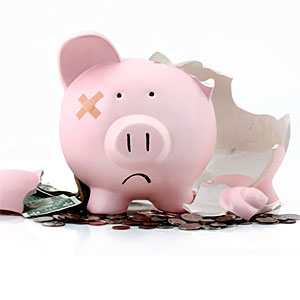 Nearly 70 million in America don’t have any emergency savings to withstand a sudden financial shock, while 22 percent of Americans or about 53 million have savings enough only to hang on for a month according to a new consumer survey from NeighborWorks America. Forty percent of consumers say that their cash reserves would last as long as three months, and 28 percent expect their emergency fund to hold them over for a year. In all, sixty-eight percent of consumers say that they’re setting money aside in case of a financial emergency.
Nearly 70 million in America don’t have any emergency savings to withstand a sudden financial shock, while 22 percent of Americans or about 53 million have savings enough only to hang on for a month according to a new consumer survey from NeighborWorks America. Forty percent of consumers say that their cash reserves would last as long as three months, and 28 percent expect their emergency fund to hold them over for a year. In all, sixty-eight percent of consumers say that they’re setting money aside in case of a financial emergency.
The survey results were released Tuesday by NeighborWorks America to mark the beginning of financial capability month, call attention to the fragility of many families’ finances nearly five years since the end of the Great Recession, and assess consumers’ interest in nonprofit resources to help them build financial stability.
“These data have to light a fire under all of us who want to see Americans better able to withstand a financial crisis, especially a recession as devastating as the one we’re climbing out of now,” said Eileen M. Fitzgerald, NeighborWorks America CEO. “Our survey underscores the need to provide better tools and information for people to manage the money they do have in order to build a strong financial base.”
The survey also examined the savings goals of Americans. Retirement and buying a home are the top savings goals at 28 percent and 13 percent, respectively, with just five percent of consumers saying that they are currently saving to create a buffer in case of a financial emergency.
Among those surveyed nationally, 29 percent of adults report no emergency savings; of these 43 percent of African-American and 39 percent of Hispanic adults said that they had no emergency savings.
As might be expected, the survey results bore out that the more income a person has, the more likely they are to have built an emergency fund. Just 11 percent of people making $100,000 or more per year said that they had no emergency fund, while more than half (52%) of people earning less than $40,000 said that they had no such reserve. People whose income places them squarely in the middle class also are financially vulnerable, with 24 percent of adults with income between $40-59,000 holding no emergency fund.
“In today’s marketplace, everyone, including those with limited incomes, can set aside some savings for emergencies and work to achieve other financial goals,” explained Fitzgerald. “We are seeing great results for consumers who use a financial coach to help them start saving, reduce debt and work toward financial goals.”


